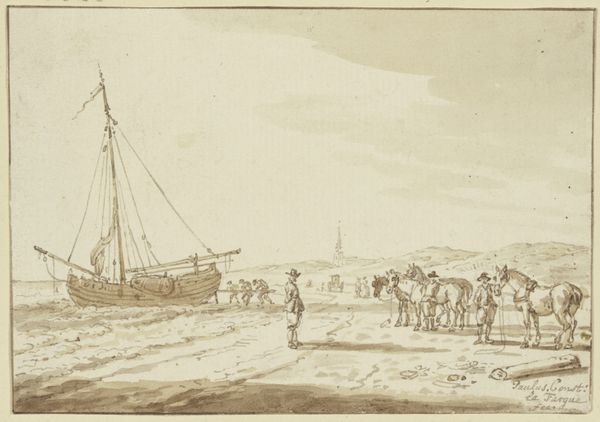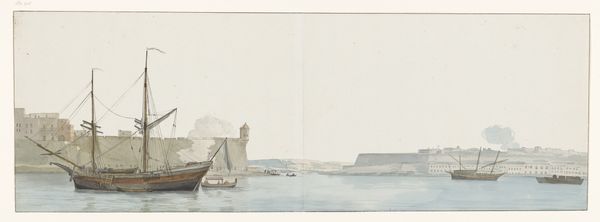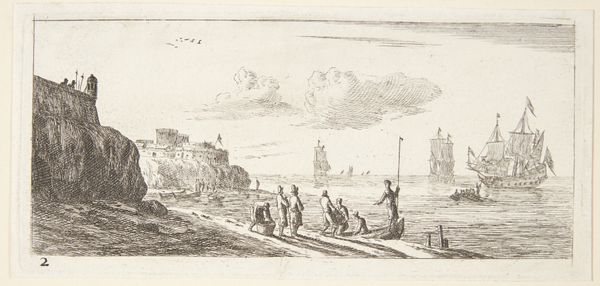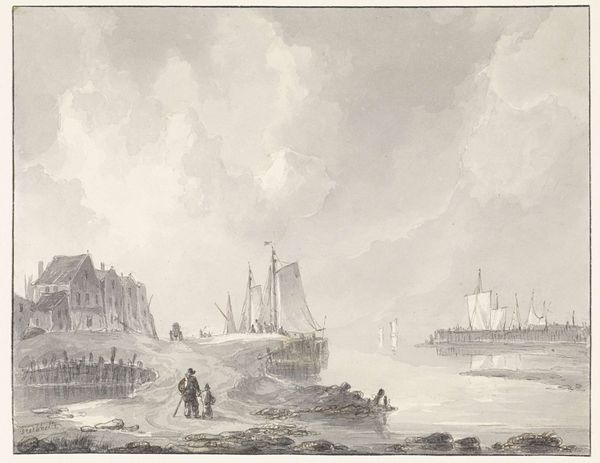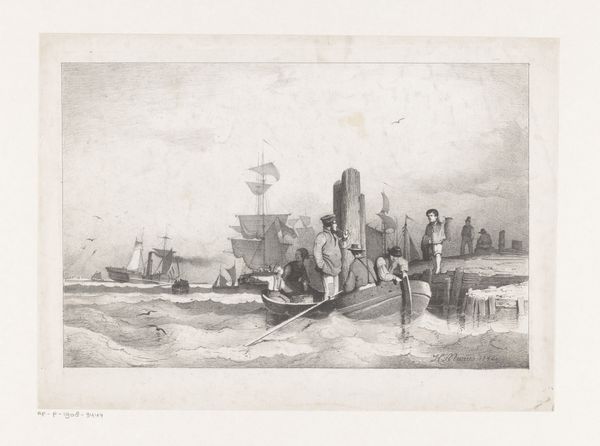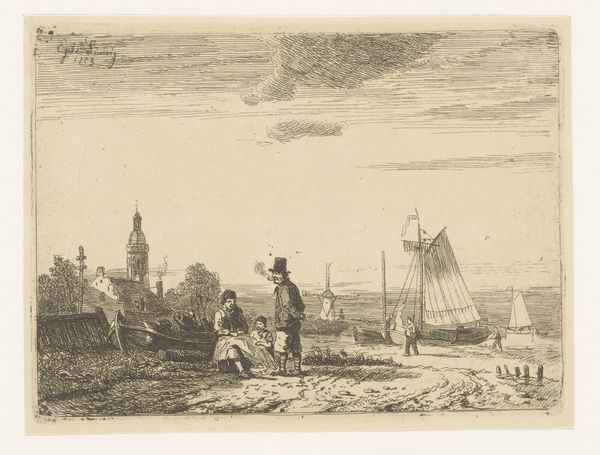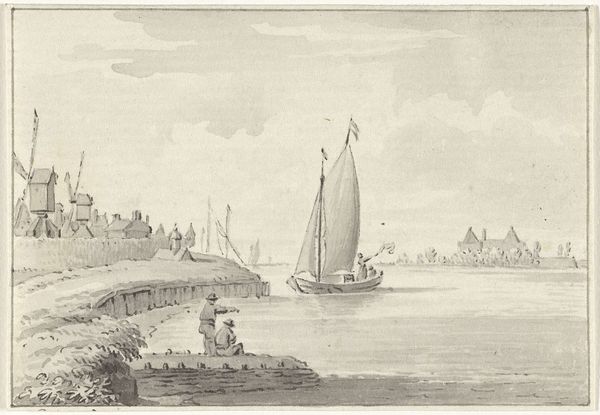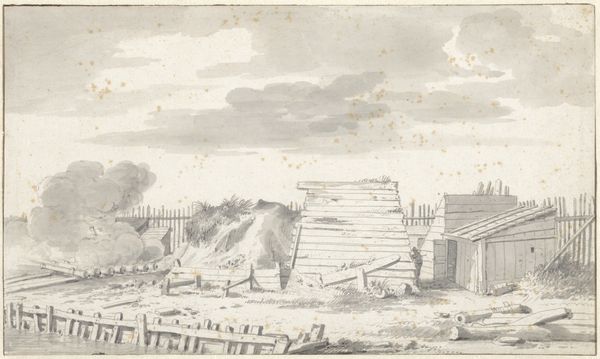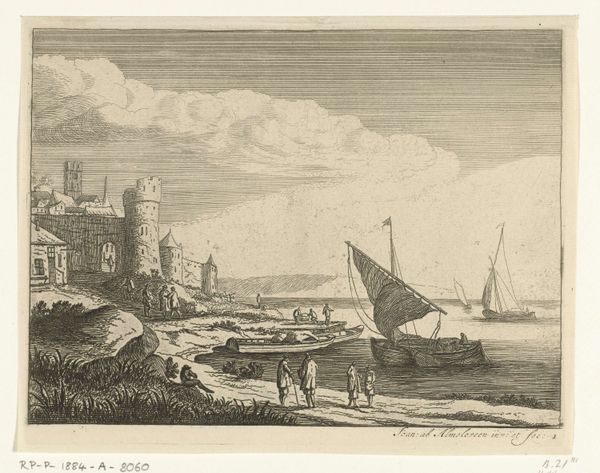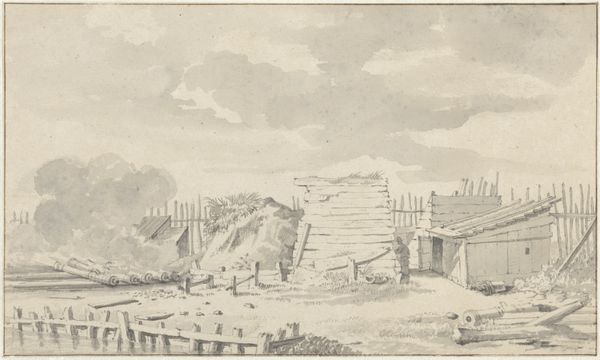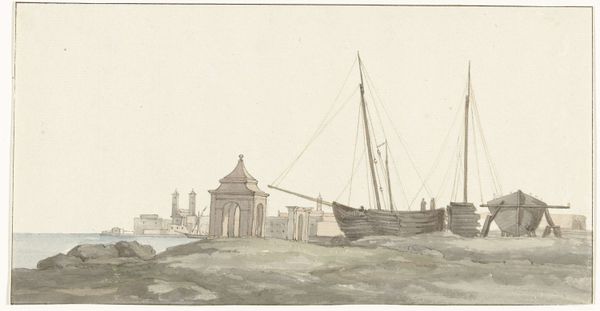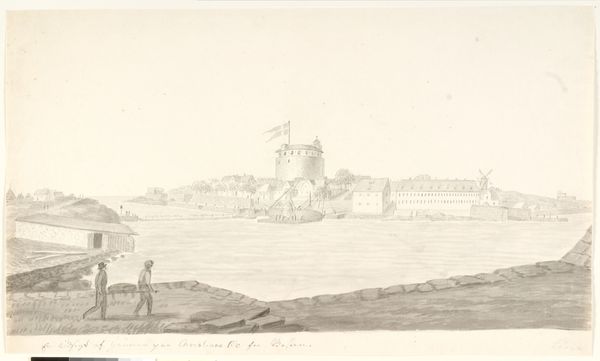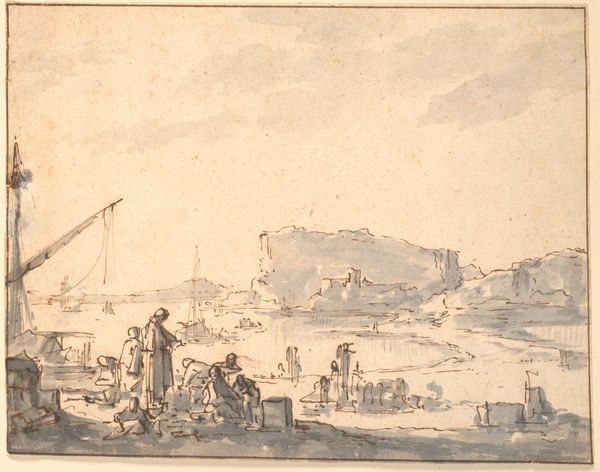
etching, plein-air, architecture
#
etching
#
plein-air
#
landscape
#
etching
#
architecture drawing
#
cityscape
#
architecture
Dimensions: height 175 mm, width 525 mm
Copyright: Rijks Museum: Open Domain
Curator: This is Louis Ducros’ “View of the Construction Site of Bari,” created in 1778. The medium here is etching, a fascinating choice to capture this bustling landscape scene. Editor: Immediately, I'm struck by the contrast. There's an almost idyllic softness in the washes of color, yet it depicts a very active, working shipyard. A place of noise, labor, and construction. It seems almost… romanticized. Curator: That romanticism is interesting when considering Ducros' broader project. He was fascinated with depicting not just completed architectural marvels but the actual process of building and labor that goes into urban development. The choice of etching, and presumably *plein-air*, highlights the artist’s focus on lived experience and on materiality. We see figures, likely workers, scattered throughout the scene. Editor: Yes, and the etching emphasizes the social dynamic here. Consider where this would have been displayed: presumably to an elite class, providing a sanitized, even picturesque view of a typically bustling and probably unpleasant, part of the city. Curator: Precisely! Etching was more easily reproduced and distributed, leading to a wider circulation of these urban images beyond painting. The availability of prints could democratize viewership but the elite remained consumers who framed, curated and bought those reproductions. How this impacts artistic interpretation? Editor: Also, look at the goat casually included near the lower right. I suppose livestock freely roamed. And then the incomplete boat structures... this reveals an era where constructing these vessels involved significant manual labor. No mechanized cranes! Curator: Exactly. There’s also a potential critique embedded here. The figures appear small, almost subservient, in the face of the scale of the architectural project underway. We glimpse human energy spent shaping the environment in response to economic forces—this etching emphasizes the artist's interest in materials. Editor: Ultimately, I am drawn to its value as a snapshot. A glimpse into a specific moment and place. A tangible representation of late 18th century labor conditions that may be different in another generation. Curator: I'd agree. Looking at the art through material and practice adds greater meaning to both this singular print and Ducros' overall artistic perspective, don’t you think?
Comments
No comments
Be the first to comment and join the conversation on the ultimate creative platform.
